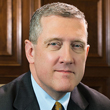Inflation Expectations Are Important to Central Bankers, Too
Modern economic theory says that inflation expectations are an important determinant of actual inflation. How does expected inflation affect actual inflation? Firms and households take into account the expected rate of inflation when making economic decisions, such as wage contract negotiations or firms’ pricing decisions. All of these decisions, in turn, feed into the actual rate of increase in prices. Given that central banks are concerned with price stability, policymakers pay attention to inflation expectations in addition to actual inflation.
The two main ways to gauge inflation expectations are survey-based measures and market-based measures. An example of the former is the inflation expectations from the University of Michigan’s survey of consumers. As a predictor of inflation, this measure tends to overstate inflation. Over the past 10 years, for example, expected inflation one year ahead averaged more than 3 percent, while actual inflation ended up averaging less than 2 percent. The Michigan survey’s results also tend to bounce around quite a bit with the price of gasoline. Because consumers usually go to the gas station, as well as the grocery store, on a weekly basis, changes in those prices strongly shape their inflation expectations. However, many other prices exist in the economy, perhaps making this particular way of looking at inflation expectations less useful.1
Another example of a survey-based measure comes from the Survey of Professional Forecasters (SPF), a group that tracks the economy extremely closely. The SPF provides forecasts of inflation based on the consumer price index (CPI) and on the personal consumption expenditures price index (PCE). The group’s expectations of PCE inflation, which is the inflation measure that the Fed targets, are consistently around the Fed’s target of 2 percent. One interpretation of these forecasts is that these professional forecasters have confidence that the Fed will make sure inflation is 2 percent no matter what is going on in the economy. This could be good from the central bank’s perspective because the forecasts are signaling Fed credibility with respect to its stated inflation target. On the other hand, the forecasts might not be very useful because they do not provide much guidance on what the central bank would have to do to steer inflation to 2 percent.
Although many people focus on survey-based measures, I tend to put more weight on market-based measures of inflation expectations. These are tied to the market for Treasury Inflation-Protected Securities (TIPS) and are based on CPI inflation. The basic idea is that a nominal security, such as a Treasury note, and a real (or inflation-adjusted) security with the same maturity both trade in the market. The price difference between the two could be interpreted as the market participants’ expectation of inflation over the horizon of the security; this difference is also called the breakeven inflation rate. TIPS-based measures of inflation expectations are available, for instance, at five-year and 10-year horizons, as well as a “five-year, five-year forward” horizon, which reflects expectations of inflation not in the next five years but in the five years after that.
The TIPS-based measures may be viewed as more informative than survey-based measures because the former tend to react more to incoming information about the economy than do the latter. In this sense, the TIPS-based measures of inflation expectations give a better sense of shifting inflation expectations than do other measures. One caveat to this view is that TIPS spreads also reflect differences in the liquidity and risk characteristics of nominal and real securities, and that it may be premia associated with liquidity and risk that are responding to incoming data, as opposed to inflation expectations themselves.2 I do not find those analyses very compelling. Consequently, I think market-based TIPS spreads provide the best measure of inflation expectations.3
Ideally, all of these measures of inflation expectations would be close to the Fed’s target of 2 percent—or 2.3 percent for those that refer to CPI inflation, which tends to run about 30 basis points higher than PCE inflation. However, inflation expectations in major inflation-targeting economies have not been running close to target of late. Europe is a prime example where inflation expectations fell dramatically in recent years. The European Central Bank subsequently took extraordinary action to try to return inflation to target by implementing a quantitative easing program. In the U.S., TIPS-based measures of inflation expectations have fallen since the summer of 2014 and are somewhat below levels that would be consistent with a PCE inflation rate of 2 percent.4 Whether the Fed’s policies will be sufficient to return these expectations to more normal levels remains to be seen.
Endnotes
- The New York Fed’s Survey of Consumer Expectations also provides a measure of consumers’ expectations for inflation. See www.newyorkfed.org/microeconomics/sceindex. [back to text]
- For instance, see Gospodinov, Nikolay; Tkac, Paula; and Wei, Bin. “Are Long-Term Inflation Expectations Declining? Not So Fast, Says Atlanta Fed,” Macroblog, Jan. 15, 2016. Also see Bauer, Michael D.; and McCarthy, Erin. “Can We Rely on Market-Based Inflation Forecasts?” FRBSF Economic Letter 2015-30, Sept. 21, 2015. [back to text]
- Another market-based measure of inflation expectations is so-called inflation swaps. For a discussion of TIPS breakeven rates and inflation swaps, see Lucca, David; and Schaumburg, Ernst. “What to Make of Market Measures of Inflation Expectations?” Liberty Street Economics, New York Fed, Aug. 15, 2011. [back to text]
- The drop since 2014 has been highly correlated with oil prices. For more on this topic, see my presentation on Feb. 24, 2016, “More on the Changing Imperatives for U.S. Monetary Policy Normalization.” [back to text]
Views expressed in Regional Economist are not necessarily those of the St. Louis Fed or Federal Reserve System.
For the latest insights from our economists and other St. Louis Fed experts, visit On the Economy and subscribe.
Email Us



